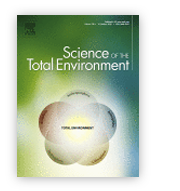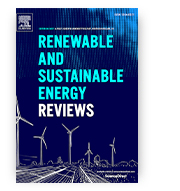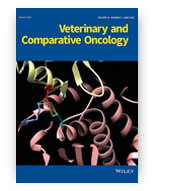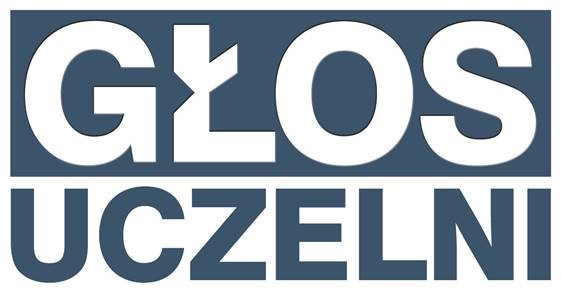
Research papers of the month – May 2022
We present the highest-score research papers of May 2022. These papers have ben published in journals with the highest Ministerial score – 200 points.
Macroecological drivers of vascular plant species composition in semi-natural grasslands: A regional study from Lower Silesia (Poland)
Małgorzata W. Raduła, Tomasz H. Szymura, Magdalena Szymura, Grzegorz Swacha
Science of the Total Environment
Ministerial score = 200.0
Journal Impact Factor (2020) = 7.963 (Q1)
 In agricultural landscapes of Europe, species-rich semi-natural grasslands provide numerous ecosystem services, such as forage production, ground and surface water regulation, and carbon sequestration. In the face of the declining area of grasslands, information about the macroecological drivers of grasslands diversity is an important element of studies on their ecology and management. Here, we tested the effect of factors representing environmental gradients, landscape structure, human pressure, habitat continuity in time, and spatial structure on species composition of vascular plants in semi-natural grasslands. The analysis was performed using a multivariate approach for 689 vegetation plots distributed across ~20,000 km2 in the Lower Silesia region (Poland, Central Europe). We found that species composition was significantly influenced by factors representing all studied groups. The most influential factors were temperature, long-term habitat continuity, and topography. Moreover, we captured the correlation between habitat conditions and habitat continuity. Old grasslands (existing since the 1940s) usually occurred in wet habitats, and medium grasslands (existing since the 1980s) existed in highlands in most cases. We highlighted the potential of freely available environmental databases, as well as historical topographic maps, in the exploration of patterns of species composition at a large spatial extent. The result show also the usefulness of vegetation databases in recognition of grassland complexes contributing the regional biodiversity.
In agricultural landscapes of Europe, species-rich semi-natural grasslands provide numerous ecosystem services, such as forage production, ground and surface water regulation, and carbon sequestration. In the face of the declining area of grasslands, information about the macroecological drivers of grasslands diversity is an important element of studies on their ecology and management. Here, we tested the effect of factors representing environmental gradients, landscape structure, human pressure, habitat continuity in time, and spatial structure on species composition of vascular plants in semi-natural grasslands. The analysis was performed using a multivariate approach for 689 vegetation plots distributed across ~20,000 km2 in the Lower Silesia region (Poland, Central Europe). We found that species composition was significantly influenced by factors representing all studied groups. The most influential factors were temperature, long-term habitat continuity, and topography. Moreover, we captured the correlation between habitat conditions and habitat continuity. Old grasslands (existing since the 1940s) usually occurred in wet habitats, and medium grasslands (existing since the 1980s) existed in highlands in most cases. We highlighted the potential of freely available environmental databases, as well as historical topographic maps, in the exploration of patterns of species composition at a large spatial extent. The result show also the usefulness of vegetation databases in recognition of grassland complexes contributing the regional biodiversity.
DOI:10.1016/j.scitotenv.2022.155151
The hydropower sector in Poland: Barriers and the outlook for the future
Tomasz Kałuża, Mateusz Hämmerling, Paweł Zawadzki, Wojciech Czekała , Robert Kasperek, Mariusz Sojka, Marian Mokwa, Mariusz Ptak, Arkadiusz Szkudlarek, Mirosław Czechlowski, Jacek Dach
Renewable & Sustainable Energy Reviews
Ministerial score = 200.0
Journal Impact Factor (2020) = 14.982(Q1)
 Poland has a considerable, but largely unused, hydropower potential. This state of affairs is mainly due to the environmental, social, economic and institutional barriers. Moreover, the consequences of climate change, which have been increasingly palpable over the last few years, result in more and more severe droughts, which also affect the economic efficiency of hydropower investments. The current situation and the development prospects for the hydropower sector in Poland are strongly influenced by both national and European law. They make it necessary to achieve a better water status and to increase the share of renewable sources in energy production. Incoherences leading to conflict situations stem from the fact that the Water Framework Directive objectives were defined in 2000, while the objectives of the EU energy policy were reformulated in 2018. With the current situation in mind, we should first analyse the possibility of attenuating some of the environmental laws, which have a significant impact on the feasibility of new hydropower investments. From the point of view of new investments in Poland, in order to limit the consequences of droughts (construction of retention reservoirs), hydropower facilities will be a significant support. Of great importance for the development of hydropower will be the use of the potential of the existing hydraulic structures for both retention and energy production. Thanks to their flexibility and storage capabilities, the hydropower installations will facilitate integration of other RES and will continue to play an important role in the energy transformation in Poland.
Poland has a considerable, but largely unused, hydropower potential. This state of affairs is mainly due to the environmental, social, economic and institutional barriers. Moreover, the consequences of climate change, which have been increasingly palpable over the last few years, result in more and more severe droughts, which also affect the economic efficiency of hydropower investments. The current situation and the development prospects for the hydropower sector in Poland are strongly influenced by both national and European law. They make it necessary to achieve a better water status and to increase the share of renewable sources in energy production. Incoherences leading to conflict situations stem from the fact that the Water Framework Directive objectives were defined in 2000, while the objectives of the EU energy policy were reformulated in 2018. With the current situation in mind, we should first analyse the possibility of attenuating some of the environmental laws, which have a significant impact on the feasibility of new hydropower investments. From the point of view of new investments in Poland, in order to limit the consequences of droughts (construction of retention reservoirs), hydropower facilities will be a significant support. Of great importance for the development of hydropower will be the use of the potential of the existing hydraulic structures for both retention and energy production. Thanks to their flexibility and storage capabilities, the hydropower installations will facilitate integration of other RES and will continue to play an important role in the energy transformation in Poland.
DOI:10.1016/j.rser.2022.112500
DNA damage response proteins in canine cancer as potential research targets in comparative oncology
Beatriz Hernandez Suarez, David A. Gillespie, Aleksandra Pawlak
Veterinary and comparative oncology
Ministerial score = 200.0
Journal Impact Factor (2020) = 2.613 (Q1)
 The DNA Damage Response (DDR) is a complex signal transduction network that is activated when endogenous or exogenous genotoxins damage or interfere with the replication of genomic DNA. Under such conditions, the DDR promotes DNA repair and ensures accurate replication and division of the genome. High levels of genomic instability are frequently observed in cancers and can stem from germline loss-of-function mutations in certain DDR genes, such as BRCA1, BRCA2, and p53, that form the basis of human cancer predisposition syndromes. In addition, mutation and/or aberrant expression of multiple DDR genes are frequently observed in sporadic human cancers. As a result, the DDR is considered to represent a viable target for cancer therapy in humans and a variety of strategies are under investigation. Cancer is also a significant cause of mortality in dogs, a species that offers certain advantages for experimental oncology. Domestic dogs present numerous inbred lines, many of which display predisposition to specific forms of cancer and the study of which may provide insight into the biological basis of this susceptibility. In addition, clinical trials are possible in dogs and may lead to therapeutic insights that could ultimately be extended to humans. Here we review what is known specifically about the DDR in dogs and discuss how this knowledge could be extended and exploited to advance experimental oncology in this species.
The DNA Damage Response (DDR) is a complex signal transduction network that is activated when endogenous or exogenous genotoxins damage or interfere with the replication of genomic DNA. Under such conditions, the DDR promotes DNA repair and ensures accurate replication and division of the genome. High levels of genomic instability are frequently observed in cancers and can stem from germline loss-of-function mutations in certain DDR genes, such as BRCA1, BRCA2, and p53, that form the basis of human cancer predisposition syndromes. In addition, mutation and/or aberrant expression of multiple DDR genes are frequently observed in sporadic human cancers. As a result, the DDR is considered to represent a viable target for cancer therapy in humans and a variety of strategies are under investigation. Cancer is also a significant cause of mortality in dogs, a species that offers certain advantages for experimental oncology. Domestic dogs present numerous inbred lines, many of which display predisposition to specific forms of cancer and the study of which may provide insight into the biological basis of this susceptibility. In addition, clinical trials are possible in dogs and may lead to therapeutic insights that could ultimately be extended to humans. Here we review what is known specifically about the DDR in dogs and discuss how this knowledge could be extended and exploited to advance experimental oncology in this species.
DOI:10.1111/vco.12795










